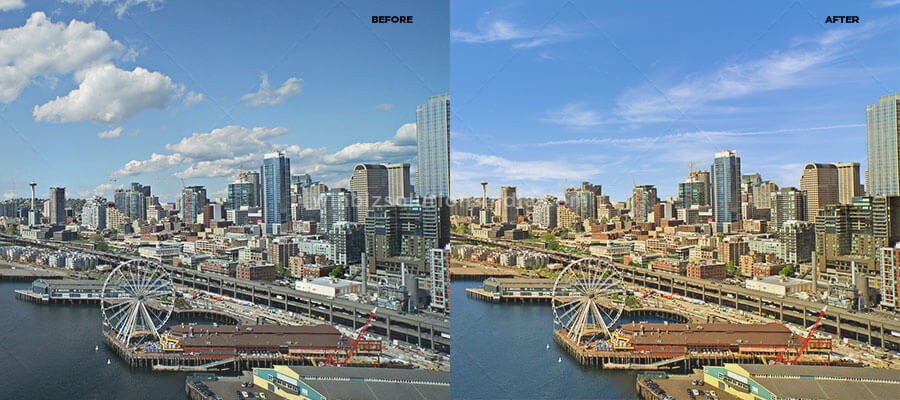In modern photography, editing has become just as important as capturing the perfect shot. One of the most noticeable aspects of an image is the sky. Whether it’s a landscape, cityscape, or even portrait photography, the sky can dramatically influence the mood, tone, and overall appeal of a photograph. Photographers and editors often face challenges when the original sky is dull, overexposed, or doesn’t match the desired artistic vision. This is where sky replacement services and manual editing techniques come into play. But how do these two approaches compare, and which is better for achieving professional results?
Understanding Sky Replacement Services
Sky replacement services are specialized tools or professional editing services that allow photographers to swap the sky in an image seamlessly. With advancements in AI and photo editing software, these services can automatically detect the sky in a photograph, remove it, and replace it with a more dynamic or aesthetically pleasing version. Many popular software options, such as Adobe Photoshop, now include built-in sky replacement features, while professional retouching companies provide comprehensive services for photographers who need more refined edits.
The main advantage of sky replacement services is speed. For photographers with large portfolios or event shoots, manually editing every image can be time-consuming. These services can automate much of the process, ensuring consistent quality across multiple images. Additionally, AI-powered sky replacement often includes lighting adjustments and color matching to blend the new sky naturally with the existing elements in the photo.
How Do Sky Replacement Services Compare to Manual Editing Techniques
Manual editing techniques, on the other hand, require a hands-on approach. Photographers and editors select the sky, mask out areas carefully, and blend the new sky using layers, brushes, and color adjustments. This process gives complete creative control, allowing for precision in areas like reflections, shadows, and fine details such as tree branches or buildings that intersect with the sky.
While manual editing can produce exceptional results, it is often labor-intensive and requires a high level of skill. For photographers who enjoy full creative control or have specific artistic goals, manual sky replacement remains a preferred choice. However, for everyday editing tasks, particularly when handling large batches of images, sky replacement services offer efficiency without sacrificing too much quality.
Another key difference is the consistency and predictability of results. AI-powered sky replacement services are designed to maintain uniformity across multiple images, which is particularly useful for commercial photography, real estate listings, and travel portfolios. Manual techniques, while customizable, may produce varying outcomes depending on the editor’s skill level and attention to detail.
Advantages of Using Sky Replacement Services
One of the most significant benefits of sky replacement services is the time saved during post-processing. Instead of spending hours masking and adjusting, a few clicks can replace a dull sky with a vibrant sunset, dramatic clouds, or even a starry night. Additionally, many services allow for a library of skies to choose from, giving photographers access to professional-quality skies without having to capture them in person.
Sky replacement services also help maintain the integrity of the original photograph while enhancing its visual appeal. Advanced algorithms can analyze the lighting, exposure, and perspective of the image, ensuring that the new sky blends seamlessly. This makes it possible to produce realistic edits that look natural, even to a trained eye.
When Manual Editing May Be Preferred
Despite the advantages of sky replacement service, manual editing is still invaluable in certain scenarios. Photographers with unique artistic visions may want to adjust every detail, including subtle color shifts or unusual lighting conditions that automated services might not interpret correctly. Manual techniques are also essential when working with complex compositions where the sky interacts intricately with other elements, such as reflections on water or translucent objects. Moreover, manual editing can be a learning experience for photographers looking to deepen their understanding of color theory, blending, and retouching techniques. Mastering manual methods can improve overall editing skills and provide more flexibility for creative projects.
Conclusion
Both sky replacement service and manual editing techniques have their place in modern photography. Sky replacement services are ideal for efficiency, consistency, and achieving professional results quickly, while manual editing offers precision, creative control, and adaptability for complex compositions. Choosing the right approach depends on the photographer’s goals, skill level, and the demands of the project. For large volumes of images or quick turnarounds, sky replacement services provide a practical solution. For intricate artistic work or personal projects where every detail matters, manual editing techniques remain indispensable.




